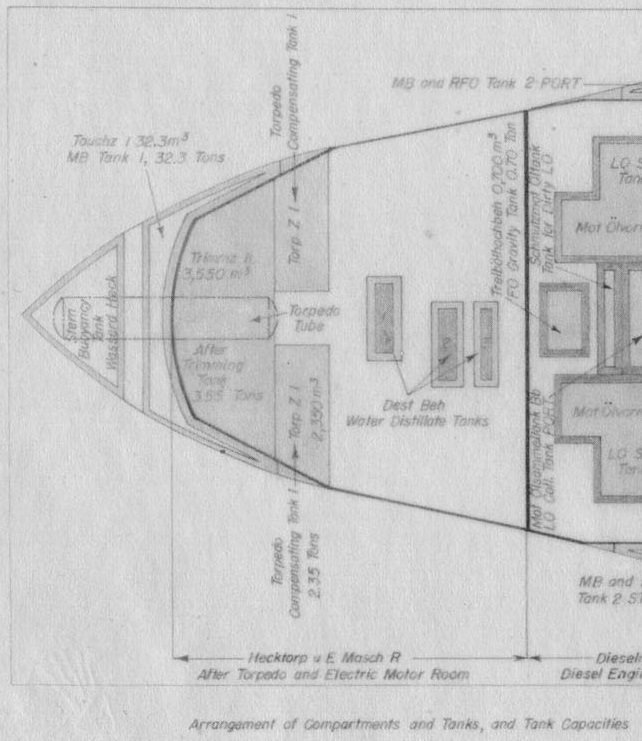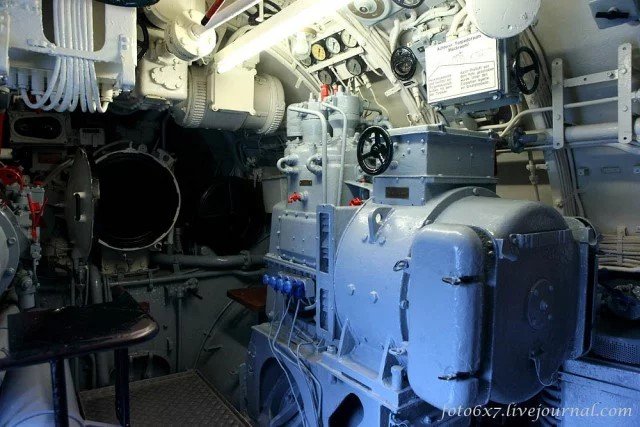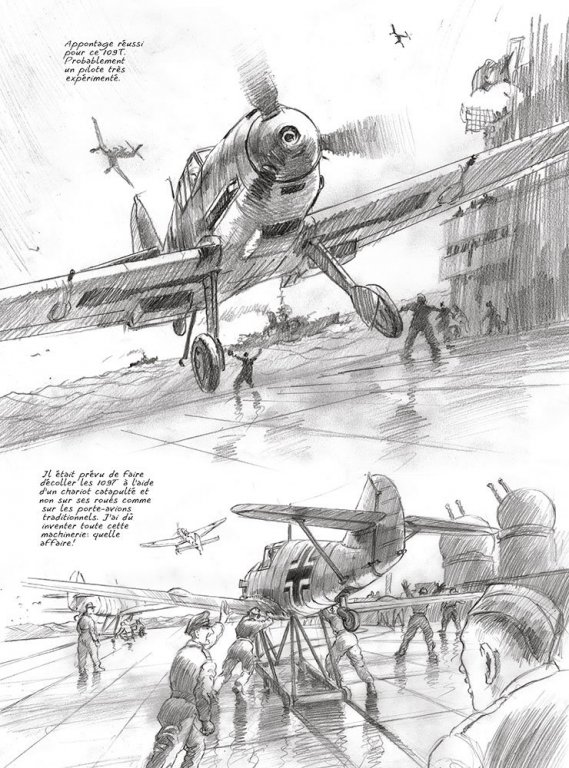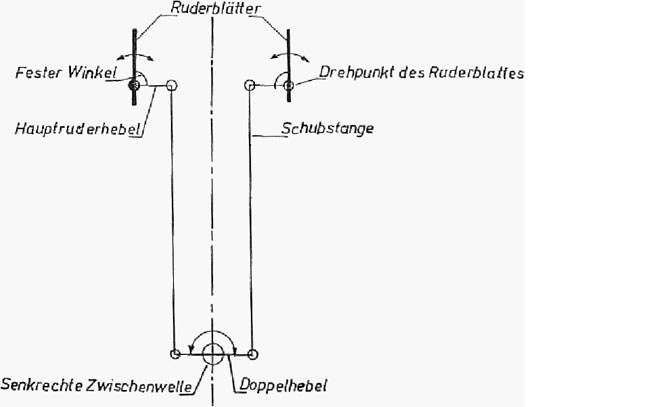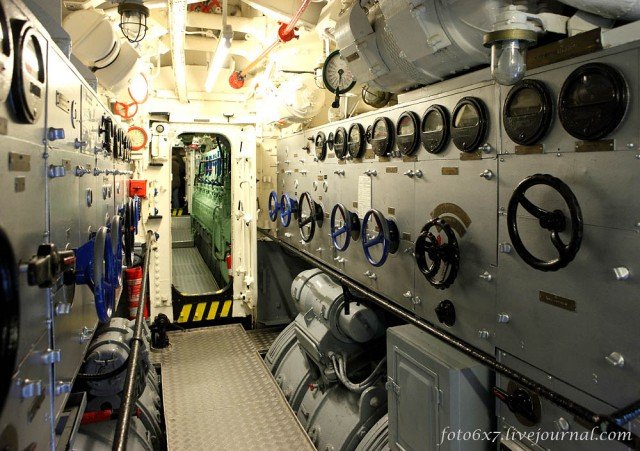-
Posts
3,563 -
Joined
-
Last visited
Content Type
Profiles
Forums
Gallery
Events
Everything posted by yvesvidal
-
Trying to finish the rear compartment. It is by far the most difficult to realize and set in location. One of the reasons is that I am trying to make it more complicated than it was designed for. The second reason is that I am trying to power the shafts and allow the propellers to rotate. Finally, the capability to take apart and insert the starboard half-hull makes all the assembly very tight and delicate. A lot fo sanding has to take place to allow the insertion of the half-hull in the main hull. I think that once I put together the entire rear compartment, I am going to glue it (with just a couple of points) to the main hull and get the shafts coupled permanently. It is necessary to file the main bulwark to allow the insertion of the cover-hull: Lots of complexity for not much additional results. We will see how this goes. Yves
-
Part E of that long deck: We are soon running out of PE parts....which is a good feeling. One more section to go.... But it will wait, as there are far too many delicate parts to glue on it. Yves
-
Alright, a little bit of de-construction. Dubz used to do that a lot on his "better-than-perfect" Syren model. I just unglued the three frames I had built, filed the main keel and will be gluing back the Trumpeter parts. Below are some of the "spare" parts I will be using for that rear torpedo compartment: Yves
-
Do you believe in Miracles and co-creation? As some of you who are following this saga may know, I have been in search for some spare parts and sprues for this rare model. I want to be able to duplicate certain components of that huge model to make it more attractive and interesting. My attempts at contacting Trumpeter (through Joanna, their sales rep in China and even the local distributor in the USA) were crowned by a complete lack of response and interest for my requests. Obviously, once you buy the kit, you are on your own and Trumpeter will not help you. I have dealt with other plastic models companies in the past (Italeri and Heller) and they have always been responsive. Trumpeter is way too big to take care of a remote and obscure customer in the far land of America. And then the miracle happened, when I had given up and started building painstakingly some parts myself: Being subscribed to the Nautilus Drydocks newsletter, I received one day a presentation of the Trumpeter U-552 model recently completed for a customer. The model was exquisitely finished but did not show any interior details. It was basically built as a regular model, with the hull and conning tower. I decided to contact the owner of the Nautilus Drydocks and inquired if he would be willing to sell me some spare parts for the rear compartment and engine compartment. He counter-offered by telling me that I could get all the parts left over from the build for an unbeatable price. Today, I just received the complete set of parts allowing me to literally build a second interior with all the compartments. Truly a miracle and the proof that we can co-create what we want if it goes along with the desires of the Universe. This will allow me to build the second electric motor and many other things making this model, hopefully better and more complete than what Trumpeter intended. A very grateful THANKS to Bob from the Nautilus Drydocks for allowing me this unique opportunity. https://www.rc-submarine.com/ This link will take you to Bob Martin's web site. Here you can enjoy some of the magnificent models, Bob has been realizing: https://www.rc-submarine.com/copy-of-gallery Yves
-
I like the contrast of color. I would keep it unpainted. Yves
- 550 replies
-
- confederacy
- model shipways
-
(and 1 more)
Tagged with:
-
Superb PE assembly. You are a Master at that game. Yves
- 345 replies
-
- graf zeppelin
- trumpeter
-
(and 2 more)
Tagged with:
-
Moving along with Deck D, right behind the conning tower: I am not letting the brass pieces, time to oxidize: Two more sections of deck and we will be done: The primer used is a can for automotive painting. Works very well on clean brass parts. You will agree with me that this deck is a nice and radical departure from the Trumpeter plastic molded deck. I am not regretting a single second, the efforts (and money) invested in that RCSUBs deck. Yves
-
It is going to be interesting when you start sanding this beast..... There will be a lot of saw dust produced. Tree nailing will probably put all local groceries shops out of tooth picks, for a long time. Yves
-
Thank you Jonathan. I believe your project deserves a Build Log in itself. Very interesting early concept for a torpedo launcher. Moving to the part "C" of the deck and mot likely the most difficult due to the anti-skidding plates around the gun: Once again, kudos to RCSUBs for their impeccable photo-etched brass kit with excellent explanations and a few spare parts: Not perfect and I cannot wait to see how it will look like with a coat of primer on top. Yes, much better. At least I can see where some small imperfections are located and sand them carefully. That hull is starting to look like a TYPE VIIc. A few more details: Yes, the area around the gun looks pretty neat once coated. And the numerous hinges are correctly aligned for the most part. I hope you are enjoying....as much as I do :-) Yves
-
While I am blocked on the rear compartment, I have decided to go back to the deck and glue some PEs. I just finished the second part of the deck with these countless hinges to glue carefully. They are about the size of a pin head (or slightly bigger) and are a challenge to place correctly aligned: This is my first attempt at using PEs and I am so glad a nice coat of primer and paint will cover the rather sloppy job I did. It will harmonize everything and hide a lot of imperfections. Yves
-
Moving along: One can clearly see the torpedo compensation tank. Unfortunately, Trumpeter only gave one in the kit, leaving plenty of open space on the side. Such a pity! Yves
-
Still working on the rear compartment. Installation of the LEDs: four of them connected in series. That should give us close to 10.8 Volts: The electrical compressor is pretty much done: Yves
-
The Electric Compressor, pimped up a little bit. It should be a four stages compressor, but Trumpeter forgot the second cylinder.... The Rear torpedo tube on its platform and the canister containing the mines: Finally, the electric panel to control the propulsion motors: Lots of detail remain to be placed and painted. Yves
-
Our next efforts are focused on the Rear torpedo tube, electric compressors and torpedoes compensation tanks. A summary of the stern tanks seems on order to explain the rear compartment: The Trumpeter kit provides one of the compensation tanks (2.35 tons of salt water), one electric compressor and the torpedo tube. Once again, it is very spartan and it is regrettable that no additional parts are provided in the kit, as these two components would not detract the viewer from the intricacies of the compartment. Below is a picture of what we are talking about, from the U-995 submarine. The large compressor sits on top of the torpedo compensation tank. The torpedo tube is visible on the left of the picture. To the extreme left is the other diesel compressor installed on the U-995, sitting on the other compensation tank. Not visible, to the right of the torpedo tube is a large canister containing mines and other "goodies" that can be launched using the ejection tube. Underneath the metal floor, is the torpedo stowage area for one eel, sitting right between the two electric motors. On the early Type VIIc units, there was two electric compressors. The German engineers replaced the starboard electric compressor later on by a diesel unit, as the electric consumption was way too important with both electric compressors. It is not clear if U-552 has two electric or a combo electric/Diesel compressors. From the manual: a) Electric air compressor. The compressed air required for blowing ballast tanks, starting diesel engines, for torpedo launching installation, anchor installation and so on, is produced by two electric, 4-stage air compressors, located in the aft torpedo room. Their performance is 6.1 liters/minute at 205 kg/cm². Compressed air from each stage is cooled down in a cooler. The air cooler and lubricating oil cooler are located in one case outside the compressor. The compressor is cooled by sea water. The two-stage cooling water pump is located on the coupling side of compressor and is driven by means of helical gears from the crankshaft. The gear type lubricating oil pump is located on the front side of compressor at its base plate and is driven from the crankshaft by means of gear wheels. The compressor is driven by a direct current, shunt electric motor, with starting compound winding on commutating poles. The motor is splash-proof and self-cooled with air. b) Diesel air compressor. Type VIIC U-boats since Boat No. ____ are provided with one electric air compressor and one diesel air compressor. The diesel air compressor is a horizontal, double piston, two-stroke diesel engine with free pistons which are directly coupled with a four-stage compressor. Its performance is 8.5 liters/minute at 205 kg/cm². After compression the air from each stage passes through a condenser for cooling. The cooler for all four stages is located beneath the compressor in individual cases. The air is cooled by means of sea water. The cooling water pump, rotary vane type, driven by a gear shaft, forces the water in the following order: cooler IV, combustion chamber cooling jacket, compressor stage I, compressor stage IV, cooler III, compressor stage III, compressor stage II, cooler I, cooler II. The lubricating oil pump, driven by means of an eccentric from the gear shaft, lubricates all sliding parts. The compressor is driven by two-stroke diesel engine made by Junkers, with two opposed pistons, which are coupled together by means of two sets of traverses, two gear racks with a geared wheel located between them. Engine pistons control intake of air, which is compressed and exhausted. The stage I compressor piston is connected with left engine piston, the stage II compressor piston is connected with right engine piston. The stage IV compressor piston is coupled with the left piston rack and the stage III compressor piston is coupled with the right piston rack. The compressor is started by means of compressed air admitted to particular compressor stage chambers. The compressor casing is splash-proof. c) High pressure compressed air flasks. Compressed air is stored in 12 high pressure air flasks with total capacity of 3.900 m3. Each flask has capacity of 325 liters and is tested at pressure of 280 at. The flasks are grouped in 6 banks (2 flasks each), which are located as follows. Bank 1 Upper deck aft, on both sides of the aft external torpedo container Bank 2 Upper deck, above the diesel engine assembly patch Bank 3 Petty officer's room port and stb. Bank 4 Forward torpedo room to port Bank 5 Forward torpedo room to stb. Bank 6 One flask in the bow buoyancy tank, one flask on the stb. side forward of the external torpedo container. The flasks are smooth shaped and are lined with lead. On both ends they narrow into the neck, capped by means of flange and cover. To drain the flask a drainage pipe is provided in the deepest point of flask. Furthermore, the flasks are inclined 4 degrees from the horizontal. Yves
-
The ceiling of the rear torpedoes / electric motors room, is pretty much done: Decals have been added on the dials and indicators. When dry, I place a few drops of clear-coat to simulate the glass lenses. The wheel is used in case of emergency and failure of the main steering system. It looks relatively realistic. I am avoiding the dirty / patina presentation as most of these vessels were well maintained during their short lives, at least in the inside. Yves
-
Greg, I hope you do not mind me posting these pictures here, but the Italian Artist Perinotto just published the Tome 4 of his drawings with two very interesting drawings: Notice the carriage/cart holding the Me-109, and used as a catapult on the deck of the Graf Zeppelin. Very advanced technology. Yves
- 345 replies
-
- graf zeppelin
- trumpeter
-
(and 2 more)
Tagged with:
-
Gorgeous and so unique work. Your model is truly a jewel and you are an artist. I love the uniqueness of that approach, even though I am far from being able to do what you did with the Mikasa. The paint is for me a way to hide the imperfections of my models and the lack of details sometimes. I have the Mikasa and may one day try to copy you.... Thank you for showing us this great model. Yves
- 34 replies
-
- mikasa
- wave models
-
(and 2 more)
Tagged with:
-
Working on the roof of the rear compartment: The Trumpeter kit is more or less accurate here and there is room for additional details. The holes will host the four white LEDs, the last hole to the left is the rudder control axle. Some of the pipes are original and prototypical, others have been left to the imagination of the artist. The mechanism on the ceiling of the rear compartment is the manual control of the rudders, in case of the failure of the electric systems. A large wheel will take place, once I have painted the ceiling. From the "Manual": 1) Steering System. a) General. The rudder installation includes the following: Two identical main rudder planes parallel to each other, Forward dive planes, After dive planes, Plane drive, Steering stations, Steering lines. Steering plane construction: To keep the driving force low, all steering planes are built as displacement, balanced rudders. They are made from watertight plating on both sides, with stiffeners provided between the plates. The spaces between plates are filled with tarred wood. Steering plane protection: A skeg is provided to protect the main rudder, especially from hitting the bottom, from which two arms lead to both rudders and are attached to the rudder pins. To prevent entanglement with naval mine wires and antisubmarine nets all linkages are made smooth and all faces are rounded. The outer edges of dive planes are protected against naval mine wires. To avoid corrosion (galvanic current between bronze and steel in sea water) all steering planes are provided with zinc protection plates. b) Main rudder installation. The main rudder is twin type and can be either electrically or manually driven. The main rudder is driven by means of vertical intermediate shaft, which passes through the pressure hull between frames 1 and 2 and which is driven by worm gear. The shaft bearing is installed at the pressure hull and is re-tightened from inside by a stuffing box. The top of the intermediate shaft (in the upper-deck) is attached to a double arm, which is connected by means of two long connecting rods with two, center-facing, main rudder arms. Each main rudder has an area of 2.75 m². The rudder maximum deflection is 33° when electrically driven and 35° when manually driven. Ruderblätter Rudder planes Fester winkel Fixed angle Drehpunkt des Ruderblattes Pivot point of rudder planes Hauptruderhebel Main rudder arm Schubstange Connecting rod Senkrechte Zwischenwelle Vertical intermediate shaft Doppelhebel Double arm The maximum deflection of the main rudder and forward and aft dive planes is limited electrically by means of a limit switch and mechanically by means of mechanical limit stop. Yves
-
A few words about the electric motors. Yes, as you may have guessed, I am trying to give some movements to that otherwise static model. The original submarine had two propellers running in a contra-rotating way, as always. I am using small Chinese motors with a high reduction gear, giving me a rotation speed of 40 RPM to 60 RPM, depending of the voltage applied to them (around 6 VDC). Since, the whole model will be powered in 12 Volts, I placed these two motors in series, making sure that they spin in the right direction as the prototype was. The propeller shafts are made of Brass tubes and rods as we saw previously. Because of the extremely slow speed of rotation, there will be no need for bearings of any kinds (or even lubrication). I just may have to hide the rubber tubes that will be used to couple the shafts to the motors. Here is a picture of the electric motor compartment of the U-995: Talking about the "real" electric motors on a Type VIIc, here is an excerpts of the "Manual" : a) Design and performance data. Manufacturer B.B.C. Mannheim A.E.G. Berlin Weight of a machine with fan blower B.B.C. 8100 kg. A.E.G. 8170 kg. Motor rated power: 276/238 kW (60 min/continuous) Rated current: 1470/1240 A (60 min/continuous) Voltage: 210 V Number of revolutions: 295/280 RPM (60 min/continuous) Excitation voltage and current: 110 V 28 A Generator rated power: 465kW(continuous) Rated current: 1550 A Voltage: 300 V Number of revolutions: 450 RPM Excitation voltage and current: 110 V 28 A b) Machine construction and connections. The E motors serve as motors to drive the propellers and as generators to charge the batteries. Each E motor is built as a fan cooled, totally enclosed, direct current, double-armature, with compound winding and commutating poles, has 2 x 8 main poles and just as many commutating poles. The motors are designed for forward and backward drive. Both armatures of the E motor can be connected in series or in parallel for drive. If one armature is damaged, the motor can still be driven in parallel connection. Cooling is provided by a blower directly attached to each motor. It draws fresh air from E motor room and blows it into the center of the E motor. The exhausted air is cooled in 2 water-cooled air coolers lying between the E motors. E motor armature connections: Drive setting Setting of the armature Dead slow serial Slow parallel half speed parallel 2 x half speed parallel Drive setting Setting of the armature 3/4 speed parallel 2 x 3/4 speed parallel Emergency speed parallel Yves
-
Thank you Greg for the explanations. You did a terrific job: very realistic. Yves
- 345 replies
-
- graf zeppelin
- trumpeter
-
(and 2 more)
Tagged with:
-
I get it and I understand the fun of turning a model into a beat-up ship. Please, document your process and tell us how you do it and what products you use. I want to rust my submarine too, as you suggested in a very early post. Thanks in advance. Yves
- 345 replies
-
- graf zeppelin
- trumpeter
-
(and 2 more)
Tagged with:
About us
Modelshipworld - Advancing Ship Modeling through Research
SSL Secured
Your security is important for us so this Website is SSL-Secured
NRG Mailing Address
Nautical Research Guild
237 South Lincoln Street
Westmont IL, 60559-1917
Model Ship World ® and the MSW logo are Registered Trademarks, and belong to the Nautical Research Guild (United States Patent and Trademark Office: No. 6,929,264 & No. 6,929,274, registered Dec. 20, 2022)
Helpful Links
About the NRG
If you enjoy building ship models that are historically accurate as well as beautiful, then The Nautical Research Guild (NRG) is just right for you.
The Guild is a non-profit educational organization whose mission is to “Advance Ship Modeling Through Research”. We provide support to our members in their efforts to raise the quality of their model ships.
The Nautical Research Guild has published our world-renowned quarterly magazine, The Nautical Research Journal, since 1955. The pages of the Journal are full of articles by accomplished ship modelers who show you how they create those exquisite details on their models, and by maritime historians who show you the correct details to build. The Journal is available in both print and digital editions. Go to the NRG web site (www.thenrg.org) to download a complimentary digital copy of the Journal. The NRG also publishes plan sets, books and compilations of back issues of the Journal and the former Ships in Scale and Model Ship Builder magazines.





